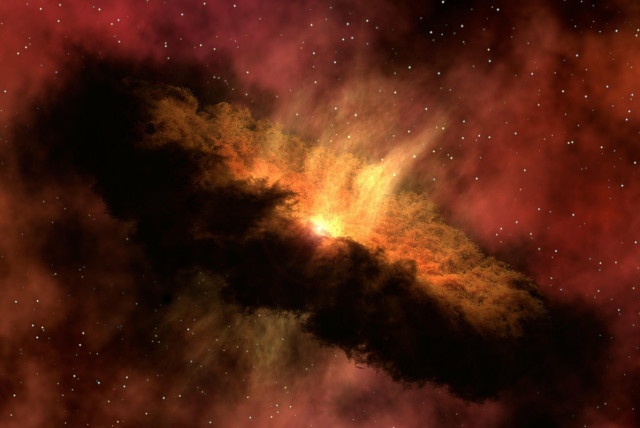Standard model debunked? Scientists say dark matter is impossible, never existed - study

Dark matter is supposed to be vital to the universe. A study by uOttawa's Prof. Rajendra Gupta claims that it isn't real and never existed, shattering the standard model of cosmology.
Dark matter, the mysterious substance long thought to be one of the most important building blocks in the universe, may actually be completely unnecessary and, in fact, cannot exist at all, according to a new study.
The study's findings were published in the peer-reviewed academic periodical The Astrophysical Journal.
The results of this study challenge our understanding of the universe, casting doubt on long-held scientific knowledge of its fabric.
Nothing really (dark) matters: Our tenuous grasp of comprehension of the universe has been shattered
First, it's important to understand just what dark matter actually is – or rather, what we thought it was, assuming this study is correct and it doesn't exist at all.
Dark matter is supposed to be an invisible substance, emitting no light, that makes up over 85% of matter in the observable universe.

It is further supposed to be vital to the universe's continued evolution, as stipulated by the standard model of cosmology.
But if it is invisible, how did scientists know there is so much dark matter, and how important it is supposed to be to the universe?
The answer is gravity. Gravity as we know it is explained by Albert Einstein's Theory of General Relativity. Anything that can't be explained by it is usually thought to be due to the influence of dark matter.
One example of this is galaxy rotation. When a spiral galaxy rotates around the galactic center, science dictates that the rotation velocities will decrease the farther away something is from the center. But that doesn't happen. Instead, it all stays flat, not decreasing in velocity.
Without breaking the laws of physics, it would have been possible for this to happen if there was a lot of matter inside the galaxy that just couldn't be seen. That would change the mass distribution.
We also see it with gravitational lensing, when something is so massive that it bends the light around it with its gravity, letting scientists see things that should be blocked. Gravitational lensing should be able to help infer how much mass something has, which can, therefore, help deduce how much dark matter is in a given galaxy, even if we can't see it.
Overall, there is a huge wealth of academic literature on the subject of dark matter, attesting with certainty to its existence and importance.
But this study, written entirely by Prof. Rajendra Gupta, changes everything by boldly suggesting another alternative: There is no dark matter, and there can't be any dark matter.
"There are several papers that question the existence of dark matter, but mine is the first one, to my knowledge, that eliminates its cosmological existence while being consistent with key cosmological observations that we have had time to confirm," he said in a statement.
If dark matter is supposed to be so important, and there is so much evidence of its existence, then how could Gupta seemingly disprove it?
The answer lies in a model combining two theories about the cosmos, covarying coupling constants, and tired light.
The first of these concerns a principle in physics regarding how much force is needed in an interaction and how those forces decrease over time. Tired light is something that seeks to address the nature of light and distance, suggesting that light seems to lose energy over time as it flies through space due to colliding with other objects or particles. This was an explanation for redshifting, which is why faraway objects in space appear redder in proportion to their distance.
Here is how this model works.
Redshifting is part of the expansion of the universe, since the farther away something goes, the redder it gets. That expansion has long believed to have been feuled by dark matter and dark energy. The existence of dark energy itself would be the answer to the mystery of how the universe expands at all, and how the expansion is accelerating.
According to this model, it would be caused by the constant weakening of the coupling as the universe expands, the weakening force allowing it to expand faster.
With that in mind, Gupta's study seems to line up with prior literature on cosmology, such as how light has evolved over time and how galaxies spread out.
However, this is just an oversimplified summation of a complex academic paper. The study covers everything from star formation, sound horizon, cosmic microwave background radiation, and more. It even proposes to have solved the impossible early galaxy mystery, when galaxies were discovered in the early days of the universe that shouldn't have been able to exist. It also reaffirms prior research that indicated that the universe is around twice as old as we thought it was.
The study isn't perfect. After all, scientists have long disregarded tired light theory as being on the fringes of science. However, the research is still solid.
At the very least, it does highlight a glaring point: The standard model of cosmology is flawed, and we need a new one.
With new technology available that can let us study space like never before, perhaps a new model is on the horizon.
